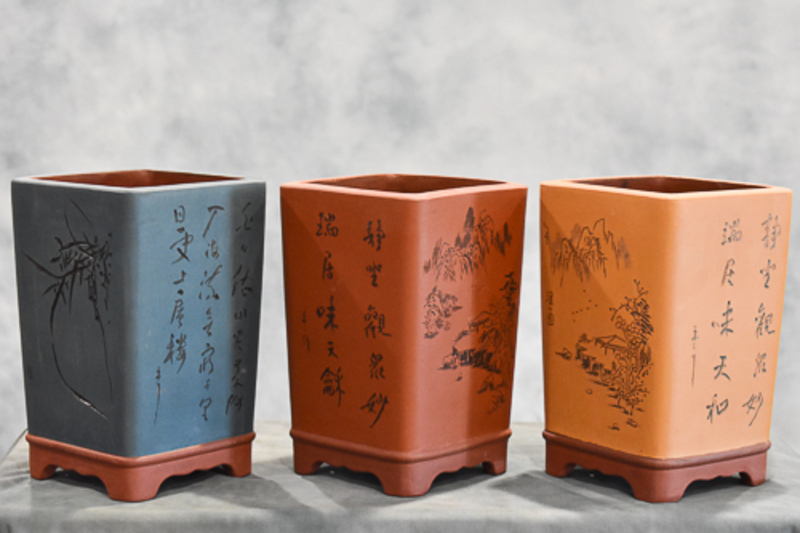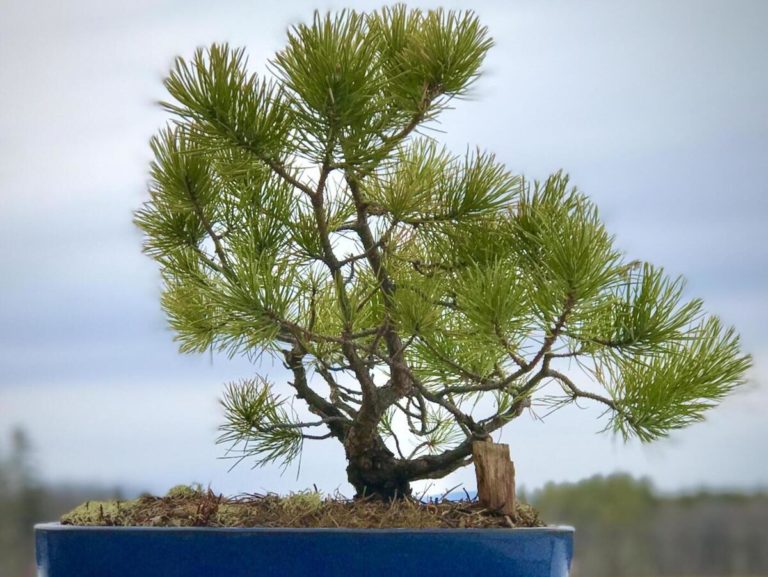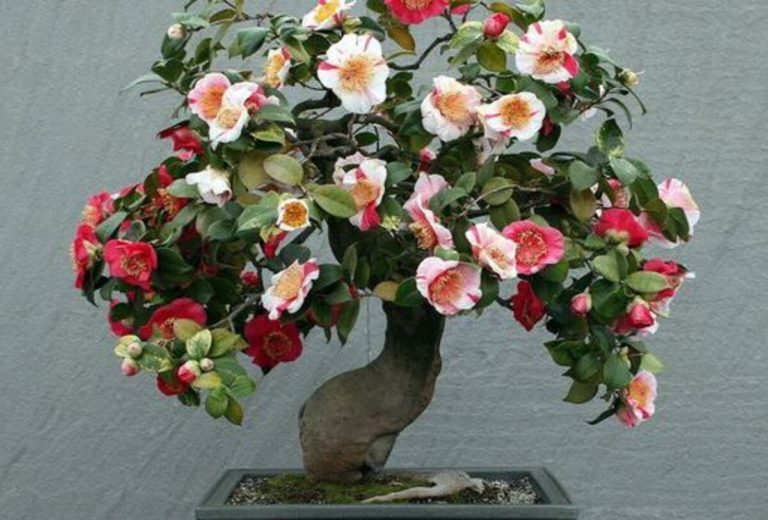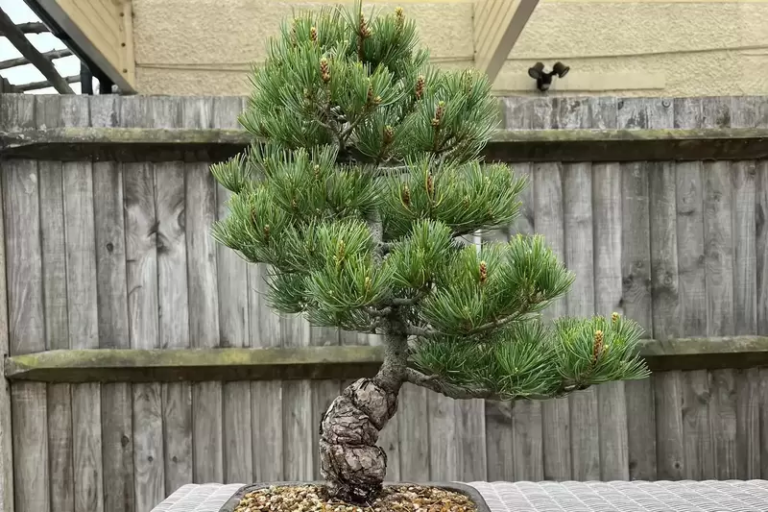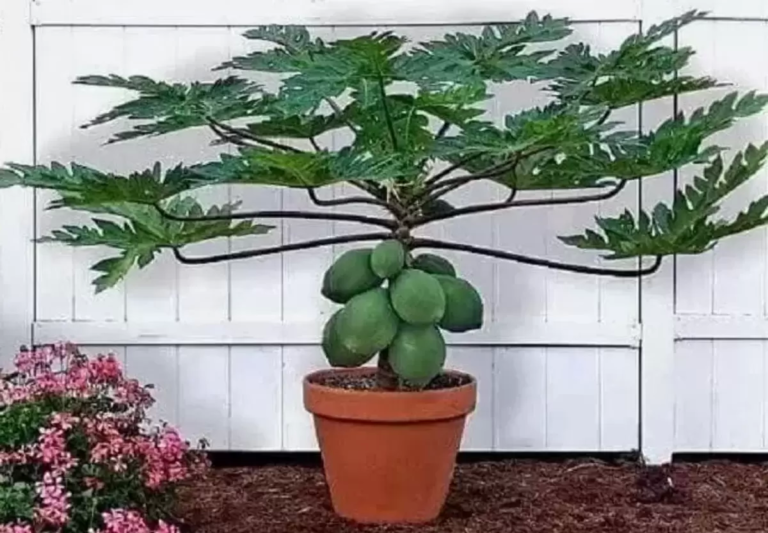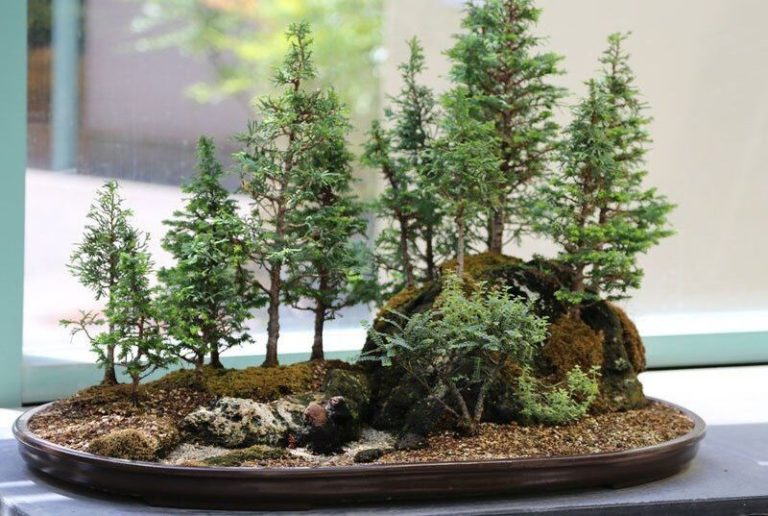Cascade Bonsai Pots: The Perfect Pot for Cascading Bonsai Trees
Bonsai trees are a unique and beautiful way to bring nature into your home. These miniature trees are grown in special pots and require careful attention to thrive. One type of bonsai pot that has gained popularity is the cascade bonsai pot.
What are Cascade Bonsai Pots?
Cascade bonsai pots are a specific type of pot used for growing bonsai trees. They are designed with a sloping shape that allows the bonsai tree to drape down over the edge of the pot. These pots come in various materials, such as ceramic, plastic, or clay, and have drainage holes at the bottom to prevent water from accumulating and causing root rot. Cascade bonsai pots are popular because they add a unique aesthetic appeal to the overall display of the bonsai tree, while also promoting healthy growth and longevity.
History and Origins of Cascade Bonsai Pots
Cascade bonsai pots have a long history in bonsai growth, extending back to the early days of the art in China and Japan. Cascading bonsai trees were created as an attempt to achieve a more natural appearance, replicating how trees grow in nature, particularly in hilly places. Cascade bonsai pots were originally reported in Japan during the Edo period (1603-1868).
During this time, bonsai cultivation became a popular hobby among the upper classes in Japan, and various styles of bonsai pots were developed to enhance the beauty and uniqueness of each tree. Cascade bonsai pots were especially popular for their ability to create a striking display and evoke a sense of tranquility and harmony.
Over time, cascade bonsai pots evolved in shape, size, and material, with various artists and artisans experimenting with different designs and techniques. Today, cascade bonsai pots remain a popular choice among bonsai enthusiasts around the world, prized for their aesthetic appeal and practical benefits in promoting healthy tree growth.
Cascade Bonsai Pots and Their Symbolism
Cascade bonsai pots are not only admired for their aesthetic beauty and practical benefits, but they also hold symbolic meaning in the art of bonsai.
The waterfall style in traditional bonsai culture depicts a tree growing on a steep slope or cliff, with its trunk and branches flowing down the mountainside. This design represents nature’s tenacity and flexibility, as well as the harmony and balance that exists between the natural environment and human intervention.
The use of cascade bonsai pots enhances this symbolism, as the sloping shape of the pot creates the illusion of a tree growing naturally on a mountainside. The cascading branches of the bonsai tree are also said to represent the flow of life and energy, reminding us of the impermanence of all things and the need to cherish each moment.
In addition to their symbolic meaning, cascade bonsai pots are also appreciated for their practical benefits in promoting healthy growth and the longevity of the bonsai tree. By providing proper drainage and air circulation, cascade bonsai pots help prevent root rot and encourage healthy root growth, ultimately leading to a stronger and more resilient tree.
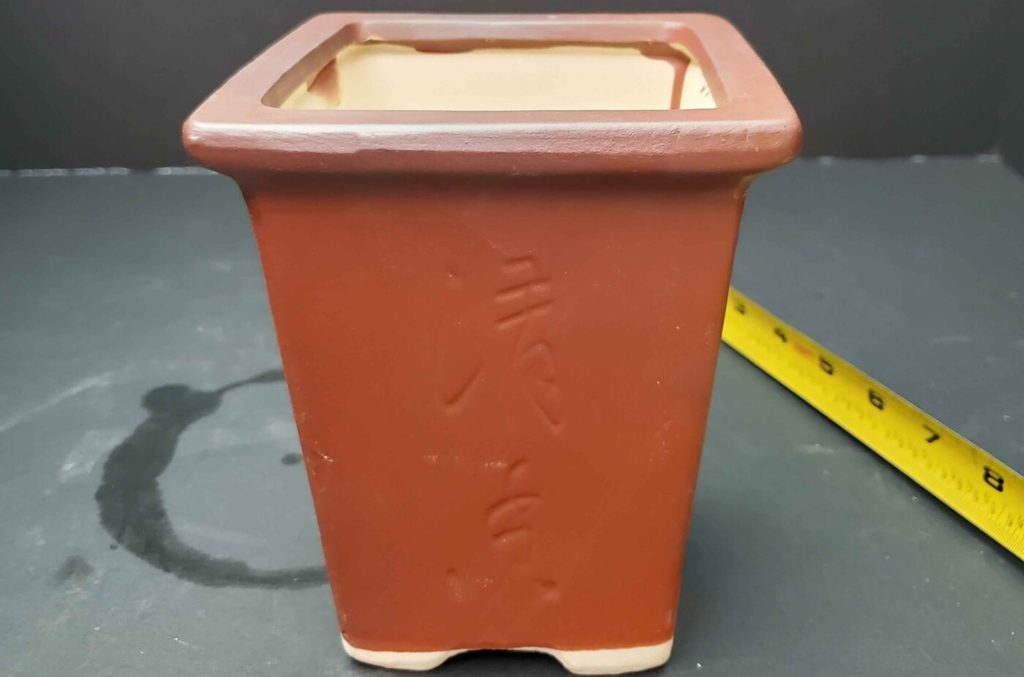
Characteristics of the Cascade Bonsai Pots
Cascade bonsai pots have several unique characteristics that make them distinct from other types of bonsai pots. Here are some of the main characteristics of cascade bonsai pots:
Sloping shape: The most noticeable characteristic of a cascade bonsai pot is its sloping shape. This shape allows the bonsai tree to cascade down over the edge of the pot, creating a visually striking display.
Material: Cascade bonsai pots are available in a range of materials, including as ceramic, plastic, or clay. In terms of durability, weight, and drainage, each material has benefits and limitations.
Drainage: Like all bonsai pots, cascade bonsai pots must have proper drainage to prevent water from accumulating and causing root rot. Cascade bonsai pots typically have multiple drainage holes at the bottom to ensure adequate drainage.
Size: The size of the cascading bonsai pot is vital for the bonsai tree’s health and growth. The container should be large enough to accommodate the tree’s root structure while without overpowering the aesthetic attractiveness of the cascading branches.
Design: Cascade bonsai pots are available in a range of styles, ranging from basic and minimalist to intricate and ornate. The design of the pot can increase the overall aesthetic appeal and natural beauty of the bonsai tree.
Overall, the distinct features of cascade bonsai pots make them a good choice for growing bonsai trees, giving both aesthetic appeal and practical benefits for the tree’s health and lifespan.
Benefits of Cascade Bonsai Pots
Cascade bonsai pots offer several benefits for the growth and maintenance of bonsai trees. Here are some of the main benefits of cascade bonsai pots:
- Aesthetic appeal: Cascade bonsai pots add a unique and visually striking element to the overall display of the bonsai tree. The sloping shape of the pot creates the illusion of the tree cascading down a mountainside, adding a sense of natural beauty and tranquility to the overall display.
- Improved drainage: Cascade bonsai pots often feature several drainage holes at the bottom, allowing excess water to escape and preventing root rot. This is necessary for the bonsai tree’s healthy development and lifespan.
- Healthy root growth: The sloping shape of the cascade bonsai pot promotes healthy root growth by allowing air to circulate around the roots. This helps prevent root rot and encourages the development of a strong and healthy root system.
- Unique styling: Cascade bonsai pots are available in a wide range of materials, patterns, and sizes, making them an ideal choice for creating a one-of-a-kind and personalized display. The pot can be chosen to match the bonsai tree’s inherent beauty and increase its overall aesthetic attractiveness.
- Promotes tree health: By providing proper drainage, air circulation, and root growth, cascade bonsai pots promote the overall health and longevity of the bonsai tree. This leads to a stronger and more resilient tree that is better able to withstand environmental stresses and disease.
Overall, cascade bonsai pots offer many benefits for growing and maintaining bonsai trees, from their unique aesthetic appeal to their practical benefits for promoting healthy growth and longevity of the tree.
Types of Cascade Bonsai Pots
There are many different varieties of cascade bonsai pots to pick from, each with its own distinct design and qualities. The following are some of the most frequent cascade bonsai pots:
Ceramic cascade bonsai pots: Ceramic pots are a popular choice for cascading bonsai pots owing of its longevity and aesthetic appeal. They are available in a wide range of colors, textures, and designs, making it simple to pick one that compliments the inherent beauty of the bonsai tree.
Plastic cascade bonsai pots: Plastic cascade bonsai pots are a lightweight, low-cost choice that is simple to clean and care for. They also come in a number of colors and styles, making it simple to select one that matches your own taste.
Wooden cascade bonsai pots: The rustic and natural appearance of wooden cascade bonsai containers may enhance the bonsai tree’s inherent beauty. They are typically made from cedar, cypress, or pine, and are renowned for their durability and decomposition resistance.
Clay cascade bonsai pots: Clay jars are the traditional choice for bonsai containers and are known for their porosity, which encourages healthy root development. They come in a variety of sizes and configurations and are typically employed for more traditional or classic bonsai designs.
Metal cascade bonsai pots: Metal cascade bonsai containers are a contemporary and fashionable option that can lend a distinctive touch to the overall presentation of the bonsai tree. They appear in a range of colors and finishes, from sleek and refined to rusty and weathered.
Overall, the cascade bonsai container you select will depend on your personal preferences and the requirements of your bonsai tree. Whether you opt for a traditional clay container or a contemporary metal one, a cascade bonsai pot can add a distinctive and visually arresting element to your bonsai display.
How to Use Cascade Bonsai Pots
Here are the basic steps to follow when using a cascade bonsai pot for your bonsai tree:
- Choose the right pot: Choose an appropriately sized cascade bonsai container for your bonsai tree. The container should be large enough to accommodate the tree’s root system without overwhelming the aesthetic allure of the cascading branches.
- Prepare the pot: Before using the cascade bonsai container, it must be meticulously cleaned to remove any debris or grime. Verify that the drainage openings at the bottom of the container are not obstructed, as this will prevent adequate drainage and may result in root decay.
- Add soil: Fill the pot with bonsai soil, leaving enough space at the top to accommodate the tree’s root ball. Make sure that the soil is evenly distributed and tamped down to ensure stability.
- Add the tree: Gently remove the bonsai tree from its current pot and carefully loosen the root ball. Place the tree in the cascade bonsai pot, positioning it at an angle that allows the branches to cascade down the side of the pot.
- Secure the tree: Use wire or other support structures to secure the tree in place and prevent it from shifting or tilting. Be careful not to damage the roots or branches of the tree.
- Water the tree: After planting the tree in the cascade bonsai pot, water it thoroughly to ensure that the soil is evenly moist. Check the soil regularly and water as needed, being careful not to overwater and cause root rot.
- Care for the tree: Maintain the bonsai tree by pruning and shaping it regularly, and fertilize it as needed to promote healthy growth. Be sure to provide adequate sunlight and temperature conditions for the tree to thrive.
By following these basic steps, you can successfully use a cascade bonsai pot to grow and maintain a healthy and visually striking bonsai tree.
Cascade Bonsai Pots for Different Bonsai Species
Cascade bonsai pots can be used to display a variety of bonsai tree species, although some species are more adapted to this form of pot. Here are some examples of bonsai species that thrive in cascading bonsai pots:
Juniper bonsai: Juniper bonsai trees are a popular choice for cascade bonsai pots, as they have a naturally cascading growth habit. The branches of the tree can be trained to grow downward and outward, creating a stunning display in a cascade bonsai pot.
Pine bonsai: As they have a natural tendency to grow erect, pine bonsai trees are also well-suited for cascade bonsai containers. When a tree is planted in a cascade bonsai container, its branches can be trained to cascade down the side of the pot, producing a stunning visual effect.
Wisteria bonsai: Wisteria bonsai trees are known for their cascading, drooping flowers, making them an excellent choice for cascade bonsai pots. When planted in a cascade bonsai pot, the branches of the tree can be trained to cascade downward, creating a stunning display of hanging flowers.
Japanese maple bonsai: Japanese maple bonsai trees have a delicate and graceful appearance that is well-suited to cascade bonsai pots. When planted in a cascade bonsai pot, the branches of the tree can be trained to cascade down the side of the pot, creating a stunning display of vibrant foliage.
Overall, the type of bonsai tree you choose to display in a cascade bonsai pot will depend on your personal preference and the natural growth habits of the tree. With proper care and training, however, nearly any bonsai species can be displayed in a cascade bonsai pot to create a stunning and unique visual display.
Conclusion
Cascade bonsai containers are a great method to improve the appearance and health of your bonsai tree. By using the proper container and adhering to care instructions, you can create a breathtaking display that will bring pleasure and tranquility to any room.
FAQ:
Q: What is a cascade bonsai pot?
A: A cascade bonsai pot is a type of bonsai pot designed for bonsai trees with cascading branches and foliage.
Q: What species of bonsai trees are best suited for cascade bonsai pots?
A: Cascading species of bonsai trees, such as the Juniper, Pine, and Japanese Maple, are well-suited for cascade bonsai pots.
Q: How often should I water my cascade bonsai tree?
A: Water your cascade bonsai tree thoroughly when the soil feels slightly dry to the touch.
Q: How often should I fertilize my cascade bonsai tree?
A: It is recommended to fertilize your cascade bonsai tree with a balanced fertilizer designed for bonsai trees once a month during the growing season.
Q: How do I prune my cascade bonsai tree?
A: Use sharp, clean pruning shears to remove any dead or diseased branches, and prune during the appropriate season for the species.
Q: Can I use any type of soil for my cascade bonsai tree?
A: It is recommended to use a well-draining soil mixture specifically designed for bonsai trees to promote healthy root growth and prevent waterlogging.
Q: How do I repot my cascade bonsai tree?
A: Repot every 2-3 years by carefully removing the tree from its pot, pruning any overgrown roots, and repotting in fresh soil.
Q: What temperature and light conditions are best for my cascade bonsai tree?
A: Different species of bonsai trees have different temperature and light requirements. Place your cascade bonsai tree in an area that receives the appropriate amount of sunlight for its species, and protect it from extreme temperatures and weather conditions.
Also Read:

